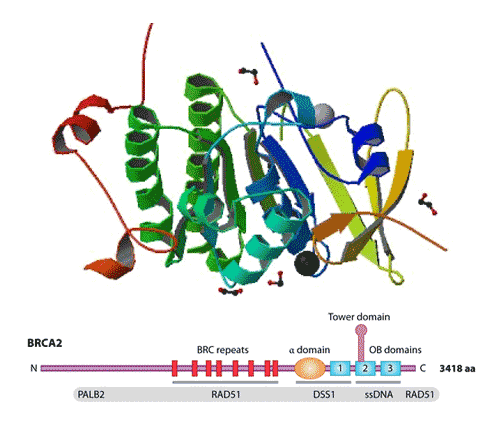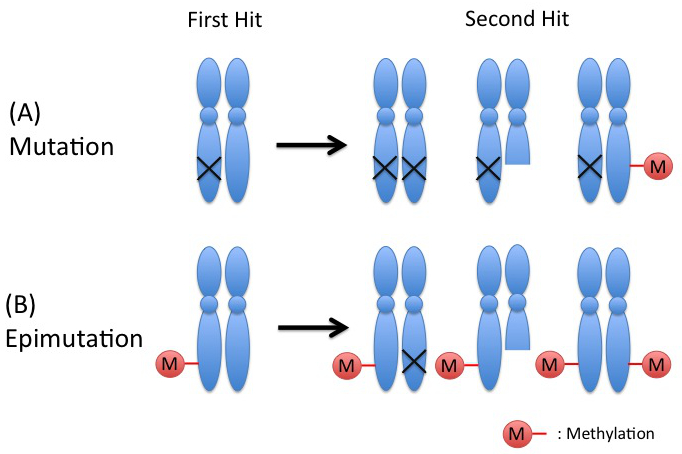Cancer epigenetics began when cancer biologist Dr. Peter Jones noted that certain genes, specifically tumor-suppressor genes, which regulate cell growth, had an increased likelihood for hypermethylation, a cause of breast cancer.

Cancer biologist Dr. Stephen Baylin demonstrated that methylating specific regions is not only effective in silencing the tumor suppressor genes, but also in mutating them.

Clinical testing of azacitidine and decitabine, DNA methyltransferase inhibitors occurred, but testing for both was abandoned because the compounds were found to be highly toxic.

A study involving the transcription of a particular RNA sequence in the African clawed frog, Xenopus laevis, by Jonathan Miller and Sir Aaron Klug led to their discovery of zinc finger domains.

Geneticist Mary-Claire King found a correlation between breast and ovarian cancer and chromosome 17, initiating research to discover which gene was the site of the mutation on chromosome 17.

Carlos Pabo and Nikola Pavletich of Johns Hopkins University established the foundation for the custom engineering of zinc finger proteins by solving the first crystal structure of zif268, the most commonly studied zinc finger.

Dr. Mark Skolnick announced that his team at Myriad Genetics discovered and sequenced the BRCA1 gene; BRCA1 mutations are associated with hereditary breast and ovarian cancer.

Scientist Michael Stratton announced that his team had identified a second gene, the BRCA2 gene, which is correlated with hereditary breast and ovarian cancer.

The sequencing of the BRCA2 gene was completed by Myriad Genetics.

The National Institute of Health and the U.S Department of Energy completed the human genome project, which sequenced a majority of the human genome and propelled the field of biomolecular research. Sequencing of the human genome allowed cancer biologists to identify oncogenes and different mutations linked with cancer.

Keith Joung of Harvard University used a bacterial two-hybrid screening system to develop custom zinc finger proteins based on previously identified zinc finger DNA sequence specificities.

Professor Melissa Southey suggested that factors triggering aberrant DNA methylation silenced the BRCA1 gene from regulating cell growth and precluding breast cancer. Her team also determined that epimutations, which reverse gene expression without altering DNA base sequences, may cause the same proportion of early-onset breast cancers as do inherited mutations of the BRCA genes.




























